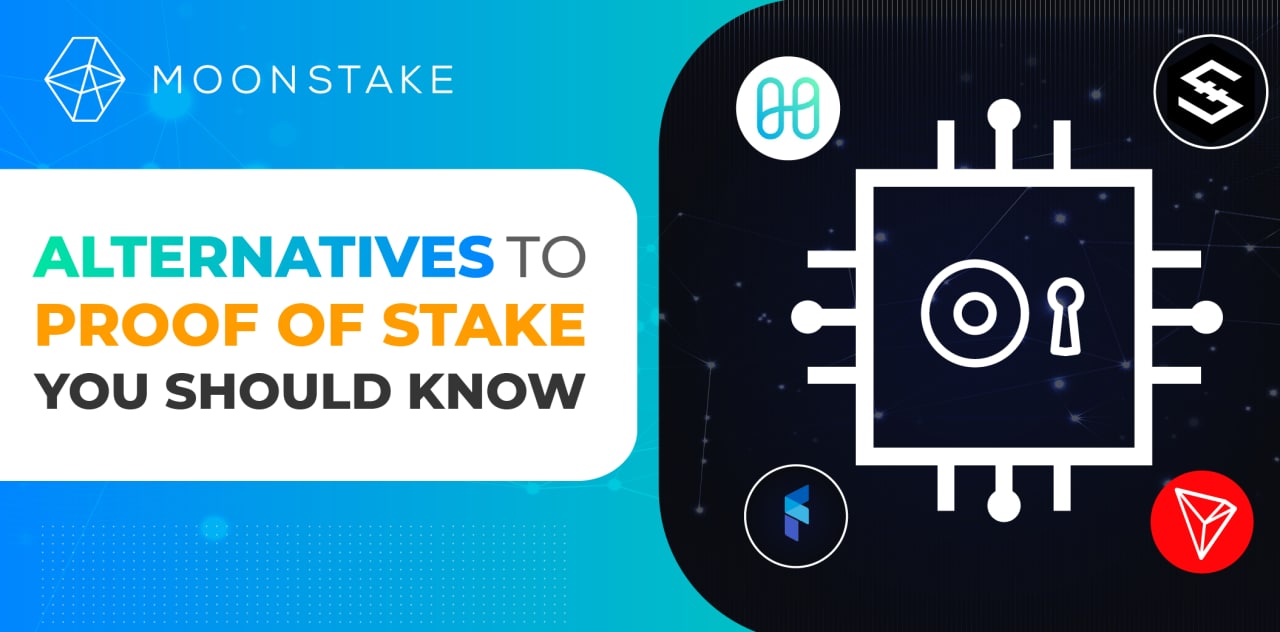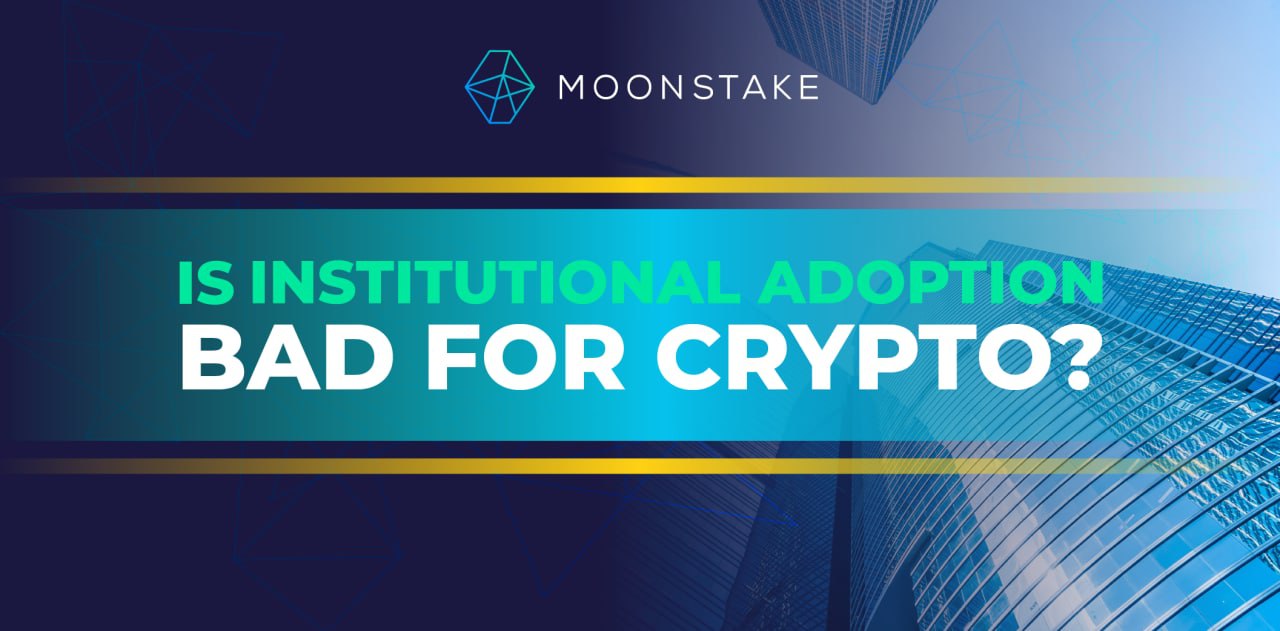Positioned as the prime alternative to Bitcoin’s Proof of Work (PoW), Proof of Stake (PoS) aims to address what it identifies as weaknesses in the PoW system. Namely, high energy consumption, slow transaction speed, costly transaction fees, and decentralized governance. Instead of determining validators based on raw computational power, PoS selects random validators for the next block based on the amount of coins they lock up. This makes it more accessible to become a validator, while also preventing centralization of validation power such as the phenomenon of concentrated mining farms in PoW.
However, not all staking coins utilize PoS. In fact, a number of staking coins supported by Moonstake, such as TRON, FIO, IOST, utilize different variations of the Proof of Stake consensus. In this article, we’ll look at some alternative consensus algorithms to Proof of Stake and what problems they are trying to solve to have a better understanding of the staking market and the future it could potentially head to.
Delegated Proof of Stake
One of the most well-known modifications of PoS is Delegated Proof of Stake (dPoS), utilized by popular blockchains such as Cardano and TRON. A common criticism levied at Proof of Stake is that it can essentially be a system where “the rich takes all”, which is ironic considering it can be argued to resemble the fiat system that blockchain opposes so much since the beginning. The “51% attack” that Bitcoin is always threatened by can still happen to PoS blockchains as it is simply a difference of 51% of the computational power, which is bought by money to buy mining equipment, and 51% of the validators under the same “person”, which is bought by staking lots of coins in the network. Although it might be “harder” to own 51% of the staked assets in a blockchain, the threat of centralization via amassing money aka power is still lurking even in PoS chains.
This is where Delegated Proof of Stake comes into play, to address the potential problem of centralized governance. The first iteration of DPoS was introduced in 2014 by the former CTO of EOS, Dan Larimer. Today, EOS along with other prominent chains such as TRON and FIO are utilizing this architecture. In this system, users of the network vote and elect delegates to validate the next block, who are usually called “Block Producers”. Using DPoS, you can vote on delegates by staking your tokens into a staking pool and linking those to a particular delegate. Let’s look at a detailed example to understand how this works:
- In Centrality which is a PoS chain, users can earn by staking to the 12 validators of the network. These validators are randomly chosen every 24 hours by an algorithm based on their total stake in the network, which is the sum of their own staked assets and the total assets users stake to their validator node.
- In TRON which is a dPoS chain, users can vote for the Super Representatives (SR) and Super Partners (SP) they support. There are 27 Super Representatives who validate blocks and 100 Super Partners who don’t validate blocks but still receive rewards, and users can earn from staking to these pools. Any Tron account can submit an application to become a super representative candidate by paying 9,999 TRX. Meanwhile, the list of SRs and SPs can change every 6 hours when elections are held, so only trusted pools that have a high staking volume will be able to become SRs and SPs.
In this way, dPoS aims to further decentralize the PoS model and increased the governance capabilities of individual users of the network. Proponents of dPoS claims that it is a more democratic way of choosing validators since it is based on earned reputation as a lawful staker and not overall wealth. Currently, Moonstake is a strategic validator partner the TRON and FIO dPoS networks, and many of the staking assets we currently support are also dPoS.
Proof of Believability
Another “evolution” of PoS is Proof of Believability (PoB), most prominently used by the IOST blockchain. PoB tries to take the idea of “reputation” to the next level by considering the validator node’s reputation, contribution, and behavior in the qualification process. While IOST randomly selects validators like the typical PoS model, it also uses a reputation-based system called Servi, which are non-tradeable tokens given to good actors in the IOST ecosystem. According to IOST, the Servi balance of a user who just got selected to be a validator is cleaned to maximize fairness and prevent the situation of “the rich gets richer”. Each node also has a “believability” score which is determined by:
- How many IOST tokens are stored in the node (users’ stake)
- Number of Servi tokens earned
- How many positive reviews the node has
- Node transaction and action history
The higher the believability score is, the more likely the node will be selected for the next block. Due to the randomization though, the same node will not be selected twice to ensure fairness and high accessibility. IOST also works with industry-leading, proven partner nodes, such as Moonstake, to power its ecosystem transactions and growth.
—
Delegated Proof of Stake and Proof of Believability aren’t the only two alternatives to Proof of Stake. However, they aren’t the only ways blockchains are trying to improve the PoS model either. Technologies such as sharding are being utilized by PoS chains such as Harmony and Polkadot to further address the scalability, interoperability, and performance issues typical of the blockchain experience.
If you’d like to learn more about this topic, let us know by commenting on our official social media channels like Twitter and Telegram. You can also get the latest news updates and campaign information there so be sure to follow us!




